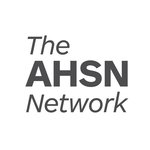
Case study guidance
As the national body for technology enabled care, TSA regularly makes the case to commissioners, policy makers, health and social care influencers about the power of TEC.
If you have completed a project with TSA support, short, impactful case studies, evidencing outcomes delivered by technology enabled care (TEC), can help make this argument. We will share case studies on the TSA website, in our e-newsletter, via social media, in presentations, meetings and events with stakeholders and members.
If you have a story to tell about results generated by your product or service then we want to hear from you. Please use the guidelines below and write your story with the commissioner or decision maker in mind. We won’t be able to use case studies that focus too heavily on your product or service. Instead, we want to know about the outcomes delivered.
Download your guide to creating your case study below:
case_study_guide-_tsa_and_tec_quality.docx
case_study_guide-_tsa_and_tec_quality.pdf
Guidelines
Things to bear in mind:
- Each case study should be no longer than 400-500 words.
- Commissioners/decision makers will want to recognise themselves in the case study and think: ‘that’s my problem and that solution could work for me’
- Be clear about the results generated. What are the hard outcomes that commissioners/ decision makers will be most interested in? Hard facts and figures are key. For example:
- o Xx hospital admission avoidance
- o Freeing up xx staff resource
- o Xxx year-on-year savings
- Case studies should focus less on your product/service and more on the issues that the product/service has solved and the outcomes generated. Case studies with a commercial/ salesy undertone will turn readers off
- Inspiring human stories about people’s lives being turned around through TEC are powerful but any qualitative effects must be supported by hard, quantitative results
Guidance:
1) Headline for case study, for example:
- Xxxxxxx supporting hospital discharge
- Xxxxxx improves end of life care in the xxxxxx area
- Xxxxxx enables remote monitoring of people with long term conditions in xxxxxx
Commissioners and other TEC purchasers may not read beyond the headline unless it draws them in. Try to include the key outcome achieved in the headline but keep it short.
2) Situation (otherwise known as ...setting the scene)
Include background information about:
- Region/ area/ locality covered
- People you are working with (e.g. their condition - people with diabetes or their demographic – people aged 75+ who’ve recently had a fall)
- Setting (e.g. housing, health, social care)
- Who commissioned the product/ service? Various organisations involved?
- What was the problem/requirement for them?
- Why did they choose your service/ product?
- Policy landscape background - legislation, health, housing or social care policy, government reports, specific financial pressures that provide context to commissioning of your service
3) Aims (what were the objectives? what were you trying to achieve?)
- Quantitative and qualitative
- Tie this in with aims of the commissioner/ decision maker. Use their language
4) Commissioning/ procurement process
- How did the commissioning and procurement process work?
- Who was involved?
- What were the main requirements of the commissioner?
- How was the service/product expected to operate?
- Value of contract, time period it is running/ ran
5) Service
- Information about the service/product delivered
- TEC type (e.g. healthcare app, bed sensor, community alarm)
- What recommendations did you make?
- How service users/ staff utilised the service/ product
- How did it specifically meet their requirements?
- What challenges did it overcome?
6) Results
- Quantitative and qualitative
- What savings have been made as a result? (Figures required)
- What was the outcome of this service? (for the commissioner, for the service user, for the organisation?)
- Will you be supporting them/ working with them in other areas?
- Have you highlighted future savings opportunities?
7) What they say
- Quotes from service users
- Quotes from commissioners/ professionals working with your service/ product
8) Want to know more?
- Contact details – if commissioners/peers want to know more about your product/ service
- Further information online – website, social media






